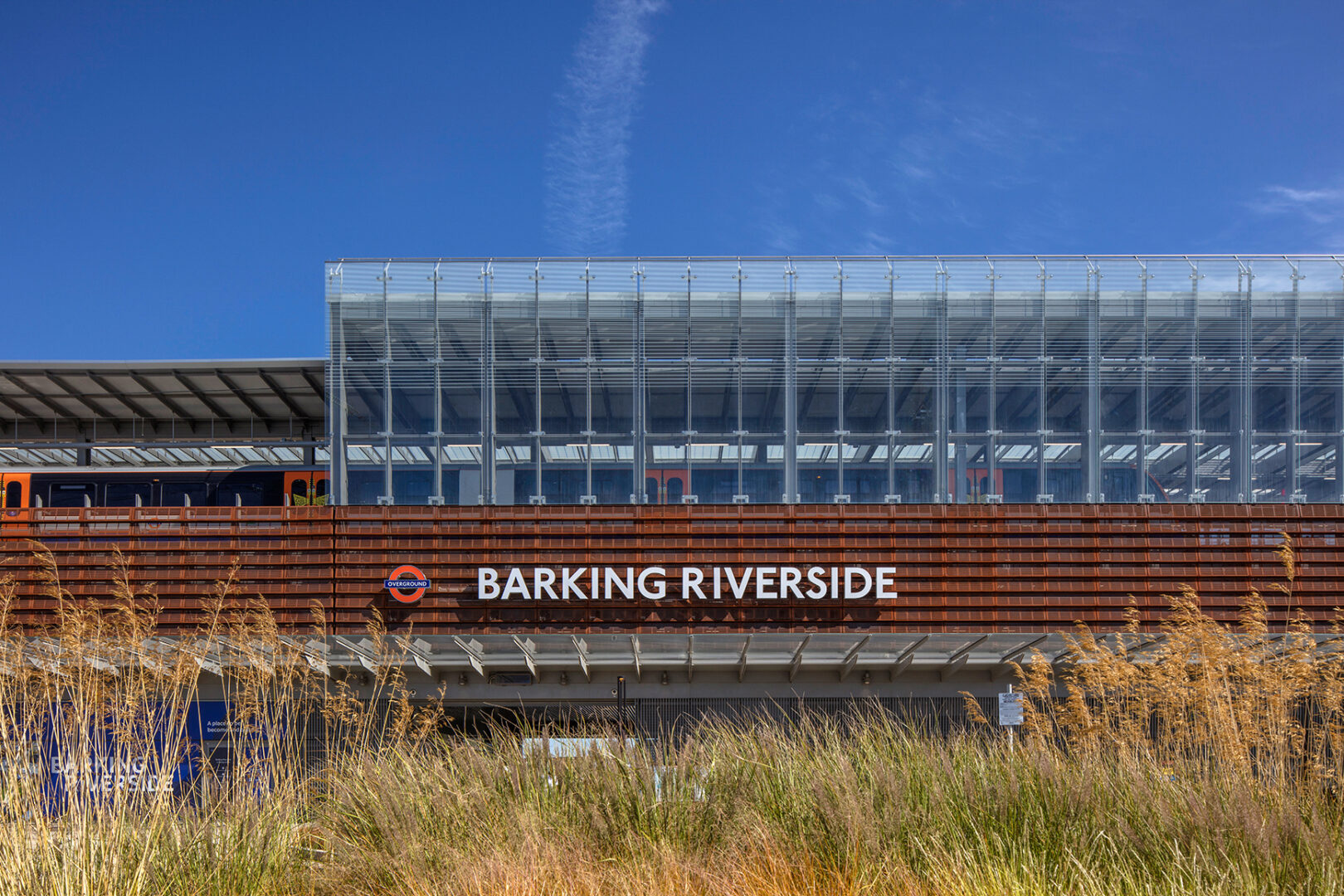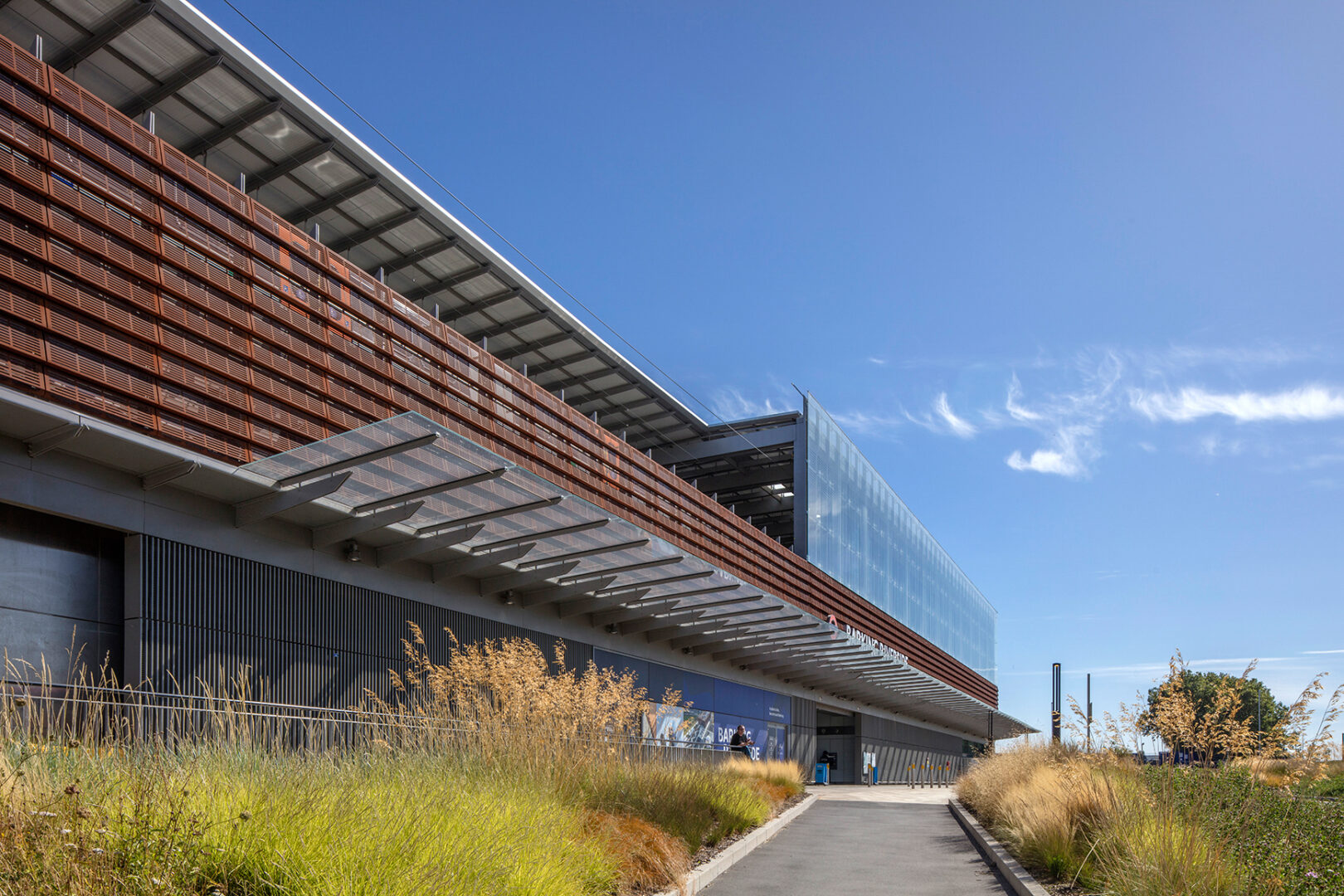Infrastructure to unlock growth
Barking Riverside is one of Europe’s largest brownfield sites and new transport infrastructure is vital to support its development, specifically the 4.5 km extension of the Gospel Oak to Barking London Overground line. Barking Riverside terminus station will be built at the end of a new viaduct, which connects with the Tilbury Loop line and runs over the reconfigured Ripple Lane goods yard and Renwick Road into the new Barking Riverside development. The extension for Transport for London is being built by MSVF, a joint venture of Morgan Sindall Infrastructure and Volker Fitzpatrick.
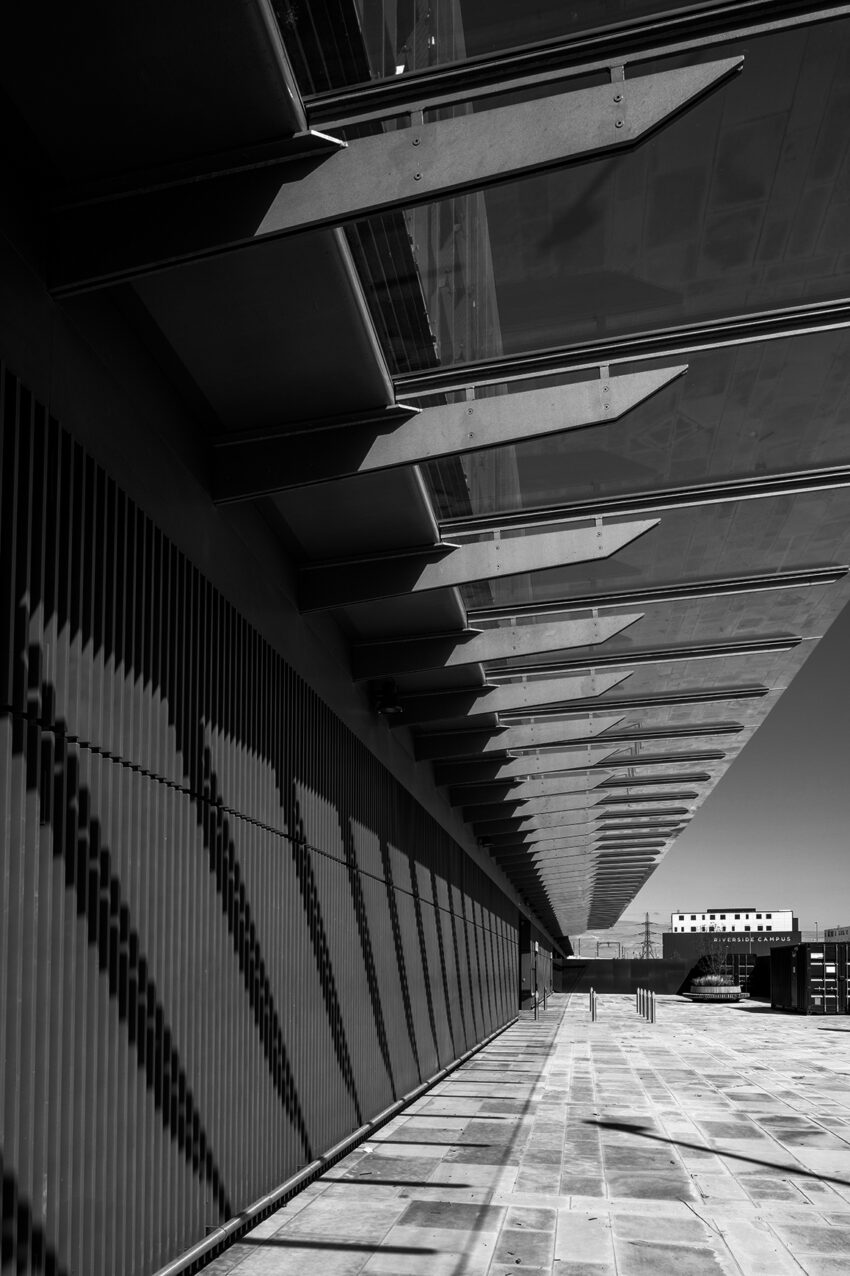
A holistic architectural design
The station’s architectural layouts and finishes complement the dimensional modules of the viaduct and the requirements of the accommodation spaces. At ground level, the façade is a combination of aluminium vertical fins, backed with translucent glass in private spaces and clear glass in public areas such as the retail units. At platform level, faceted and perforated Corten cladding panels screen the viaduct and hidden services, creating a self-finished material colour band that will age and weather naturally.
The choice of materials and textures create layers of transparency and shadow that will change throughout the day with the levels of natural and artificial light. Natural stone flooring throughout the station provides visual continuity inside and out and between lower and upper levels.
Glazing will provide extensive views to the River Thames and the ongoing development of Barking Riverside, as well as views in to the station from the surrounding area. It will also provide protection for passengers eight metres above the River Thames on cold, winter days.
Working collaboratively with the structural engineers we have achieved an exposed structural roof and façade frame, an expressive architectural vision, which also delivers on London Overground’s brief to accommodate regular visual inspections. Taking a lead on the coordination of MEP designs has allowed the seamless integration of service routes and equipment into an holistic architectural design.
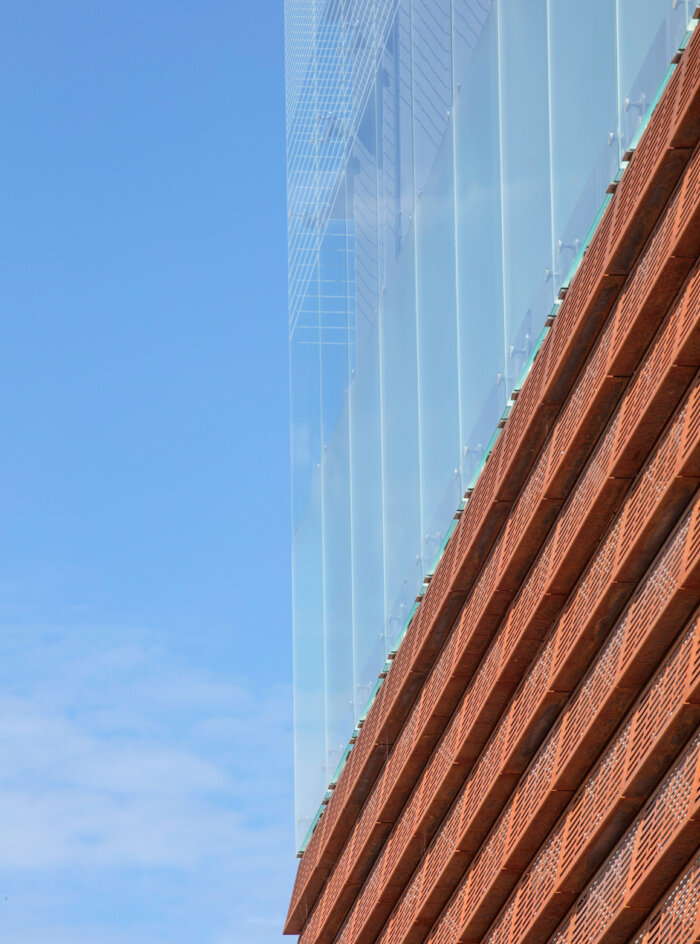
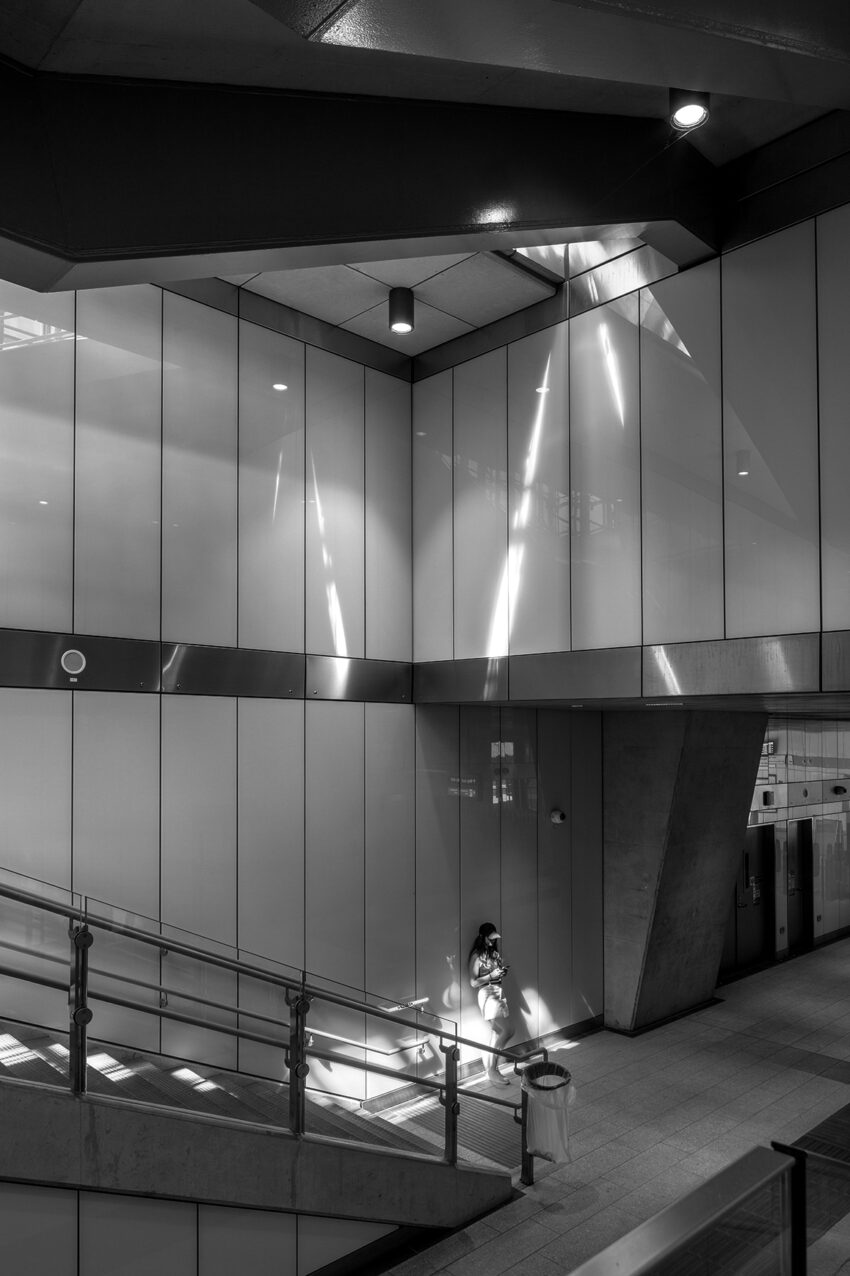
Sustainable Design
The delivery of Barking Riverside station has helped to facilitate the transformation of a brownfield site into a sustainable community with 2km of publicly accessible Thames waterfront, and a Green Bracelet Ecology Park comprising of varied landscaping shaped around ponds, walkways and cycleways. The station itself has been designed to align with principles outlined in TfL’s Sustainable Design Action Plan (SDAP). The SDAP guides good and best practice in sustainability in accordance with five key principles: economic progress, climate change, safety and security, quality of life and transport for all.
The sustainable design solutions implemented at Barking form three main areas: Firstly, the development provides socio-economic benefits to existing businesses through temporary and permanent employment creation. Secondly, the building was carefully designed to reduce the chance of wind tunnels negatively impacting the station and surrounding urban realm and thirdly, photovoltaic panels have been located on roof to generate sustainable energy.

